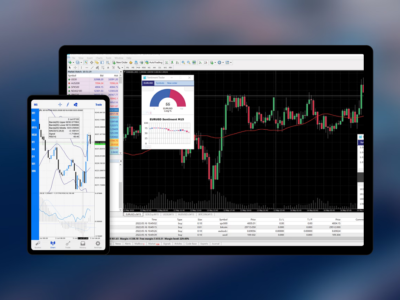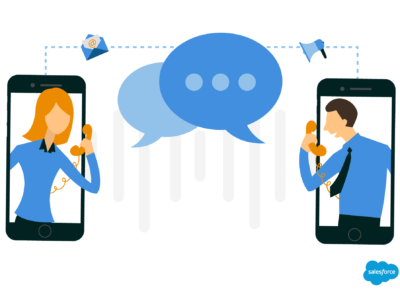More than 30 percent of Chief Marketing Officers want to invest more in marketing analytics. One area of interest for CMOs has to be user behavior.
It’s little wonder CMOs feel so strongly about this. Collecting and analyzing data about user behavior has some big advantages for the businesses that adopt it. Here’s seven reasons why user behavior analytics can improve your marketing efforts.
- Understand Your Leads and Customers
What is user behavior? It’s the actions people take when they see your ad, interact with you on social media, or visit your website.
With marketers spending more on their digital campaigns, getting insight into how users interact with them is vital. User behavior data can tell you about which pages on your website are most popular or which ads get the most clicks.
The more data you can collect, the more insight you’ll get. That, in turn, can help you understand your customers and your leads.
With user behavior analytics, you’ll learn more about who your customers and leads are. You might also get more insight into the types of content they like. From there, you can begin to understand their motivations.
The kind of insight loans itself to marketing efforts that really speak to your audience.
- Develop Marketing Efforts to Meet Their Needs
User behavior analytics is effective because it sheds light on why your customers act the way they do. You can get insight into not just how many clicks an ad has but also the kinds of people clicking it. Then you can discover the user’s needs and design marketing materials to address those needs.
An example makes this clear. Suppose you send out an email that includes a coupon for $5 off a $50 purchase. Later, you send another email advertising a 25 percent off sale.
Both emails perform well, but the 25 percent off email outperforms the $5 coupon. This insight can tell you that your customers are likely looking for a good deal. They might be very price sensitive.
The more information you have, the more you can tie behavior and motivations back to individual groups. Suppose younger users were more likely to open up the 25 percent off email. Older users were equally likely to open either.
Now you know younger users are likely to be even more price sensitive than their older counterparts.
- Create More Personalization
The deeper you can dive into behavior analytics, the easier it becomes to segment your user base. From there, you can personalize the marketing materials they see.
Think about the price-sensitive young shoppers in the email example. Now suppose you know they’re young women who use Instagram a lot.
You may want to create a special Instagram campaign for them. Ask them to post a pic of them posing with your product to get a discount coupon. If you run an ad campaign on Instagram, you may want to be sure it appeals to younger women.
If you turn to older users on Facebook, you might not emphasize the “good deal” angle quite as much. There may be other factors driving these people to look at your products. They may not respond to your ads about deals the same way the younger demographic does.
- User Behavior Analytics Can Drive Clicks and Conversions
Once you’ve used the data insights to understand your audience, you’ll craft great marketing materials. Is that all user behavior analytics can do?
Not by a long shot! User behavior monitoring can actually help you determine how people are responding in real time. In turn, you can use the information and insights to drive more clicks and conversions.
Suppose someone clicks your ad on Facebook. They visit your website and add an item to the cart. They then abandoned the page.
With user behavior analytics, you may be able to understand why this is happening. One of the most common reasons for cart abandonment is high shipping costs.
Knowing that, you can retarget this user with a free shipping deal. They return to the website and finish their transaction.
Analytics can also help you drive clicks by comparing what’s working and what’s not. Is one image outperforming another when it comes to driving ad clicks? Maybe some tweaks to the copy will help your ad resonate with a target audience.
- Improve the Customer Experience on Your Website
Online user behavior can also tell you how people are interacting with your website. Time on page and high bounce rates could mean there’s a problem with your site design. Is a landing page getting hits but not a lot of clicks?
It could be time to take a look at a data visualization tool like a heat map. The map shows you where people are looking when they visit your page. Maybe they’re not clicking that CTA button because they’re not seeing it.
Using these insights could help you improve your website. In turn, you’ll deliver a better customer experience for visitors.
- Grow Relationships With Leads and Customers
Finally, user behaviour insights can help you grow relationships with leads and customers. Understanding their behavior can help you address their needs and understand their motivations. In turn, the response to your marketing improves.
Take social media user behavior analysis as an example. You can analyze the kind of content people interact with the most. Then you can deliver more of that, to drive more user interaction.
Get Started With User Behavior Analytics
Understanding user behavior is key to developing more effective marketing. Why do people do the things they do? What are their needs, and how can you meet them?
User behavior analytics provides an answer. To get started, you’ll want to invest in the right software. It will help you collect and assess the data you need. From there, you’ll want to create customer surveys, customer personas, and more.
Looking for more ideas about how to use data analysis or marketing to grow your business? Take a look at the archives! There are plenty of tips and tricks to help keep your business growing.













Comments